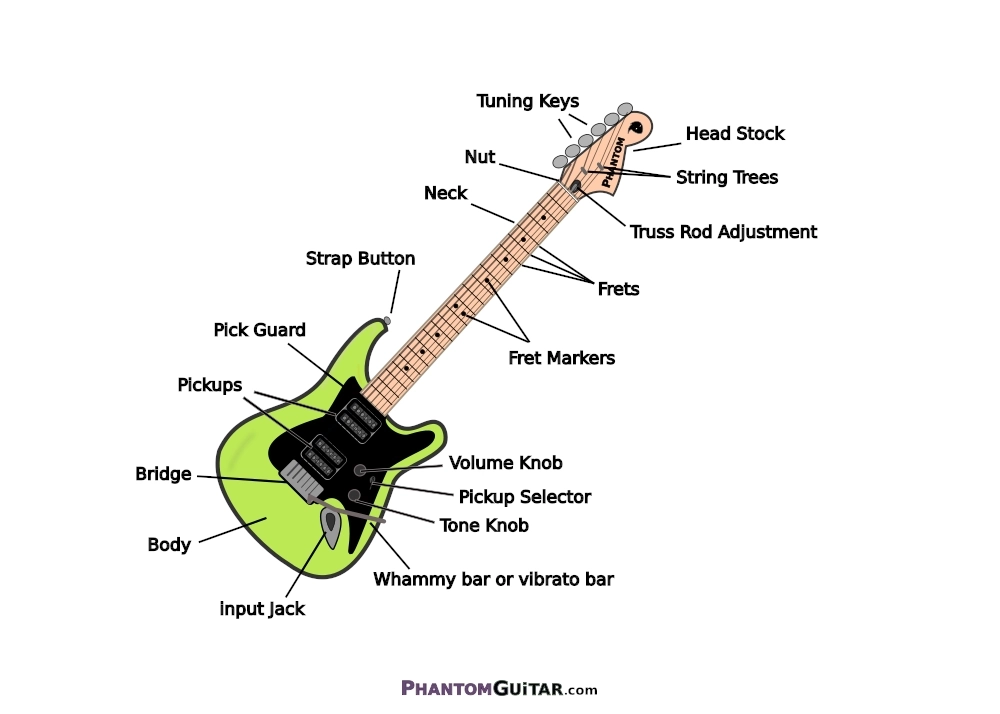Guitar Anatomy
It's good to know the names of the guitar parts so that you can easily talk about it with other people and so you won't be confused when you encounter them in guitar lessons or possibly when you need to purchase spare parts when something breaks.
Parts of a guitar
The diagram below shows the names of each of the parts of a guitar. I used an electric guitar so the sound hole an acoustic guitar would have is not shown.

Guitar Body
The guitar body is the bulk of the guitar that almost everything else attaches to. It's where all the electronics or sound hole (for an acoustic guitar) go. The body helps with sound vibration and also gives you something to hold on to.
Guitar Bridge/Tremolo
The guitar bridge is where your guitar strings attach to the guitar body.
Guitar tremolos come equipped with a tremolo bar or whammy bar that is used to bend and alter the pitch of played notes.
Guitar pickups
The guitar pickups are electronic and magnetic devices that detect sound vibrations and convert them to an electronic sound signal to send down to a wire (plugged in via the cable jack) for further processing via amplified speakers. A selector switch and volume and tone controls are used to modify their output. On an acoustic guitar, the sound hole the equivalent to the pickups and is what converts the string vibration to sound.
Strap buttons
The strap buttons are little buttons that you can use to put a guitar shoulder strap on to help you hold the guitar while standing up to play.
Pick Guard
The pick guard also know as the scratch plate houses the electronics and also proved protection against scratching your guitar's body paint while playing.
Guitar Neck
The guitar neck, which also consists of the fretboard, is where most of the magic happens...this is where you will do all your playing. The strings are stretched across the neck.
Frets
The Frets are little metal bars on the fretboard/neck that help in sounding out the notes when you press down with your fingers to play. They are also mathematically organized on the fretboard to occur at a certain distance apart from each other.
Fret markers
Fret markers are little dots or other designs to help you know what fret number you are at while playing.
Headstock and tuning keys
The headstock houses the tuning keys through which the strings are wound in order to tune your guitar. The nut is at the base of the headstock and is slotted in order to guide the strings up the headstock.